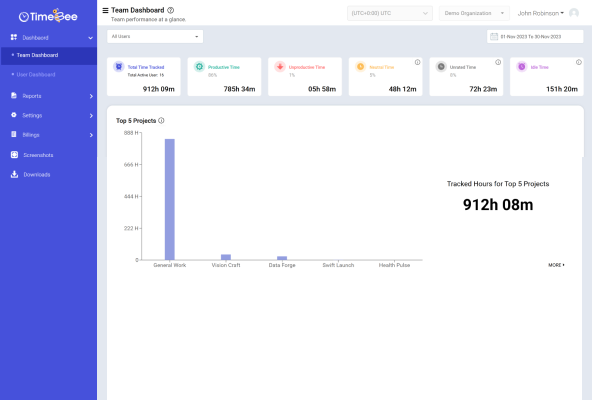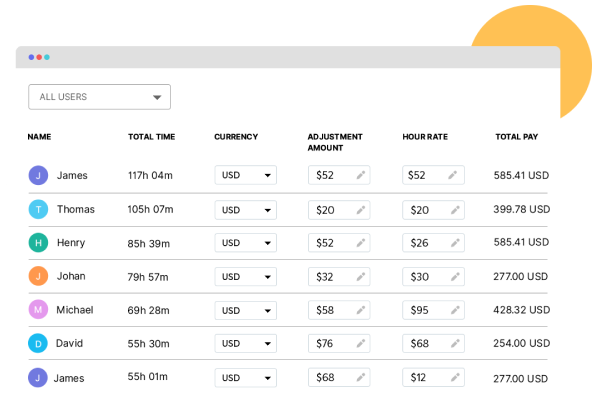Content
Content
The usual working time for an employee is 40 hours; however, employees can choose to work beyond these hours for the employer’s benefit. The employer must compensate workers for every hour worked beyond normal working hours.
As per the Fair Labor Standards Act (FLSA), the employer has to pay 1.5 times the hourly salary for overtime. However, in many areas, employees work overtime without pay.
Overtime has long been a part of work culture, and many laws are built around the concept. It is not necessarily a bad practice; however, the way it is implemented has the potential to be harmful to your employees and the organization as a whole.
Overtime can be helpful for those who require more money to meet their ends. However, the important distinction between acceptable overtime standards is the choice itself.
Today, we’ll be discussing mandatory overtime, what it does, and how you should avoid it.
What is Mandatory Overtime?
Mandatory overtime, also known as forced overtime, is when employers require employees to work beyond their standard hours, regardless of their willingness or availability.
Mandatory overtime is not necessarily problematic. It is implemented for various reasons, such as meeting critical deadlines, addressing unexpected staffing shortages, or handling seasonal influxes in workload.
For instance, in a manufacturing plant facing a sudden surge in orders, employees might be forced to work additional shifts to meet the increased demand. While this may seem necessary to fulfill business needs, the sudden implications can create employee issues.
Is Mandatory Overtime Legal?
The legality of mandatory overtime usually depends on the jurisdiction and industry regulations. In many regions, it is legal, and employers have the right to enforce overtime in certain circumstances, provided they fulfill all the necessary criteria.
This criteria is:
- Employers did not add the overtime clause to the contract for an hourly working employee.
- The employer does not meet the safety standards defined by OSHA (Occupational Safety and Health Administration). These may include recognition of hazards or jeopardizing the safety of the employee.
- The employer fails to pay added charges adequately for mandatory overtime.
- The employee is on leave or has an emergency.
- The union has voted it out.
Employers must be familiar with these limitations and labor laws when creating contracts for hourly-paid employees. The best practice is to consult legal experts to ensure compliance.
The Impacts of Mandatory Overtime
Mandate Overtime is legal, and employers can practice it. However, the question is whether it is good for the business. The imposition of mandatory overtime can have both positive and negative repercussions on the work environment.
On the one hand, it allows businesses to respond swiftly to fluctuating demands, but on the other hand, it can lead to conflicts within the work environment. Let’s evaluate the pros and cons of mandatory overtime.
Downside of Mandatory Overtime
Employee Burnout: Forcing employees to work long hours can lead to physical and mental exhaustion. When the employees are exhausted, they will not be motivated, which may impact their productivity. So, you are paying extra for the same amount of productivity.
Learn more about Burnout from our detailed blog here.
Safety Concerns: Overworked employees are more prone to fatigue-related accidents. Working above the capacity leads to health issues. So, if an employee with such conditions is operating heavy machinery, a slight error in judgment can lead to a big accident.
Employee Dissatisfaction: Employees may refrain from management when the organization regularly practices mandatory overtime. This could create conflicts or lead to employees considering leaving the company altogether. In both cases, employers lose their valued employees.
Dependant Work Culture: If the business requires overtime too often, it may not have sufficient resources to meet its demands. So, those working more will leave, and the company will suffer a loss.
Benefits of Mandatory Overtime
Meeting Deadlines: In some cases, businesses may fail to meet their deadlines, and mandatory overtime is the only way to help meet critical deadlines and avoid project delays.
Employee Flexibility: Overtime can also offer some employees the opportunity to earn extra income to meet their needs.
How to Avoid Mandatory Overtime
Mandatory overtime can surely help the company overcome difficult situations. However, as an employer, you should take measures to stop it from becoming a norm and build a healthy work environment.
Do Effective Workforce Planning
Effective workforce planning involves hiring resources according to your project’s requirements. Mandatory overtime should not be an option in the initial planning.
You should also be able to anticipate workload fluctuations or any other situation during project execution. Include all these aspects in the initial planning and prepare by aligning staffing accordingly.
You can also use data from previous projects, seasonal trends, and forecasting to adjust staffing schedules proactively. For instance, you can consider hiring additional part-time or full-time employees during the peak season or when the project requires more staff.
Streamline Workflows and Processes
Streamlining workflows and processes means creating a structure by defining all the work steps to use resources efficiently. Optimize the sequence of tasks, eliminate unnecessary things, and ensure that all the workers are provided with work schedules.
Analyze existing workflows to identify issues and check what you require and the anticipated demands. Establishing standardized procedures and protocols for completing tasks to reduce confusion and repetition. You can also use automation to reduce mandatory overtime.
Want to Monitor Work Hours, Track Tasks, and Optimize Team’s Performance?
Download TimeBee
Maintain Open Communication and Employee Engagement
Employees have the right to refuse overtime. If they feel threatened or are uncomfortable voicing their opinions, it may become a problem for you later. Maintaining open communication and employee engagement builds a workplace culture where information flows freely and employees are heard.
Usually, the employees are aware of the mandate over time as it is included in the contract or the policy. However, they should be consulted before applying it.
If it is included in the contract, the employee may not say no initially but later want to refuse. Establish formal and informal channels for employees to provide feedback where they can raise concerns about this particular situation. You can also conduct one-on-one meetings to understand better.
Build a Rewarding Work Environment
Mandatory overtime can be reduced by ensuring employees are motivated and working efficiently. When work is done on time, there is no need for overtime. Building a rewarding work environment can motivate employees to do more.
Moreover, if you offer rewards in the form of bonuses, commissions, or profits, the employees will be productive and won’t mind working extra to achieve goals.
You can also provide rewards and pay more for overtime. In such cases, the employees will work overtime to earn added money, and you won’t have to force them to. However, this practice can also promote toxic productivity, so only allow it when necessary.
Time Management – TimeBee

One major cause of mandatory overtime is project time and budget overages. This can happen due to a lack of oversight of resource utilization. Two major resources, time and money, require the most. You can use time management tools to ensure the project is on time.
TimeBee is a time-tracking tool that tracks employee hours, monitors workforce productivity, and helps identify potential overtime situations in advance. It provides real-time data that can give you visibility into your workload and help prevent the need for mandatory overtime. Let’s see how TimeBee can assist you.
Track Time and Overtime
TimeBee tracks an employee’s time from the second they start working. It monitors employee hours and identifies trends in their time usage. By analyzing this data, employers can address workload issues and determine why overtime is needed.
As TimeBee also provides productivity reports, you can check the productivity level of each employee to get insights about work patterns. Based on this data, you can take measures to improve employee productivity so there is no need for mandatory overtime.
Track Project Progress and Compare the Requirements
TimeBee also tracks the project’s progress. This simple feature lets you monitor the budget spent on a project with respect to employee time. By analyzing how much you’ve already spent, you can then plan ahead for overtime and determine whether it’s required at all.
Billable Hours

An employer’s first instinct should be to manage costs and monitor the bottom line. Mandatory overtime can severely hurt this. But if you’re using TimeBee’s billable hour progress reports, you can evaluate total billable hours and decide on the costs you may have to bear due to mandatory overtime.
Conclusion
Mandatory overtime sometimes seems like the best option, but in reality, it poses a complex challenge for employers. It can be costly and difficult to manage as you have to pay extra to employees, and they have to use other resources to complete their work.
However, with careful planning, strategic workforce management, and TimeBee, you can manage the workload in the given time and are not required to enforce overtime. Employees can complete their work efficiently as you have provided them with a sustainable and fulfilling work environment.
Manage Tasks Efficiently, and Prevent Burnout,
Get TimeBee Today
Similar Reading



